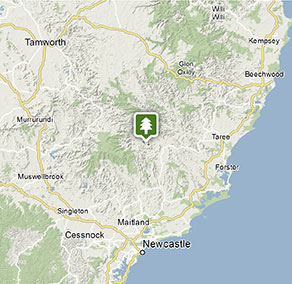School excursion
The earth's environment
Copeland Tops State Conservation Area
Info for teachers
Everything you need to know about The earth's environment.
Program outline
- Welcome, acknowledgement of Country and safety talk.
- Introduction to the site and overview of what the excursion will entail
- Walk to Mountain Maid gold mine, morning tea, toilet break.
- Identify the living environments of various animals and plants, and examine the specific adaptations that support their survival.
- Investigate the features of unique native plants including strangler figs
- Conduct a field sketch of the park
- Lunch
- Return to bus along Copeland Creek
- Return to carpark via toilets. Farewell and depart on bus.
What to bring
Please wear closed comfortable shoes and bring a hat and sunscreen. Be ready for all weather conditions with a jumper and raincoat. And remember to bring food and any necessary medications.
It’s a good idea to pack your belongings in a backpack rather than a plastic bag because we have some curious birds who may try to break in and share your lunch with you.
Getting there and parking
Get driving directions
To get to Copeland Tops State Conservation Area from Gloucester:
- Follow Thunderbolts Way northwest out through the village of Barrington and over the single-lane bridge
- Continue west on Barrington Tops Forest Road until you come to Copeland village
- Turn left onto Copeland Road and follow this road to the carpark at the end
Maps and downloads
Risk assessment and risk benefits
Our rangers and guides have the technical skill and experience to assess the risks and the benefits of a variety of activities delivered as part of our learning programs.
We believe in including opportunities that allow students to learn and experience for themselves through exploration in the natural environment.
Please make your own risk assessment based on the information provided. Detailed potential risks and controls are provided for the site to assist teachers in risk management planning. Teachers and carers should be aware of, and consider the needs, abilities and medical conditions of students when visiting this site. The supervision of students remains the responsibility of the teacher. The school must ensure an adequate number of adult supervisors are present.
Accessibility
Disability access level - hard
Pathways are wide and relatively flat, with some uneven rocky surfaces. The boardwalk has stairs and is not accessible to wheelchairs.

Park info
- in Copeland Tops State Conservation Area in the North Coast region
Copeland Tops State Conservation Area is always open but may have to close at times due to poor weather or fire danger.
